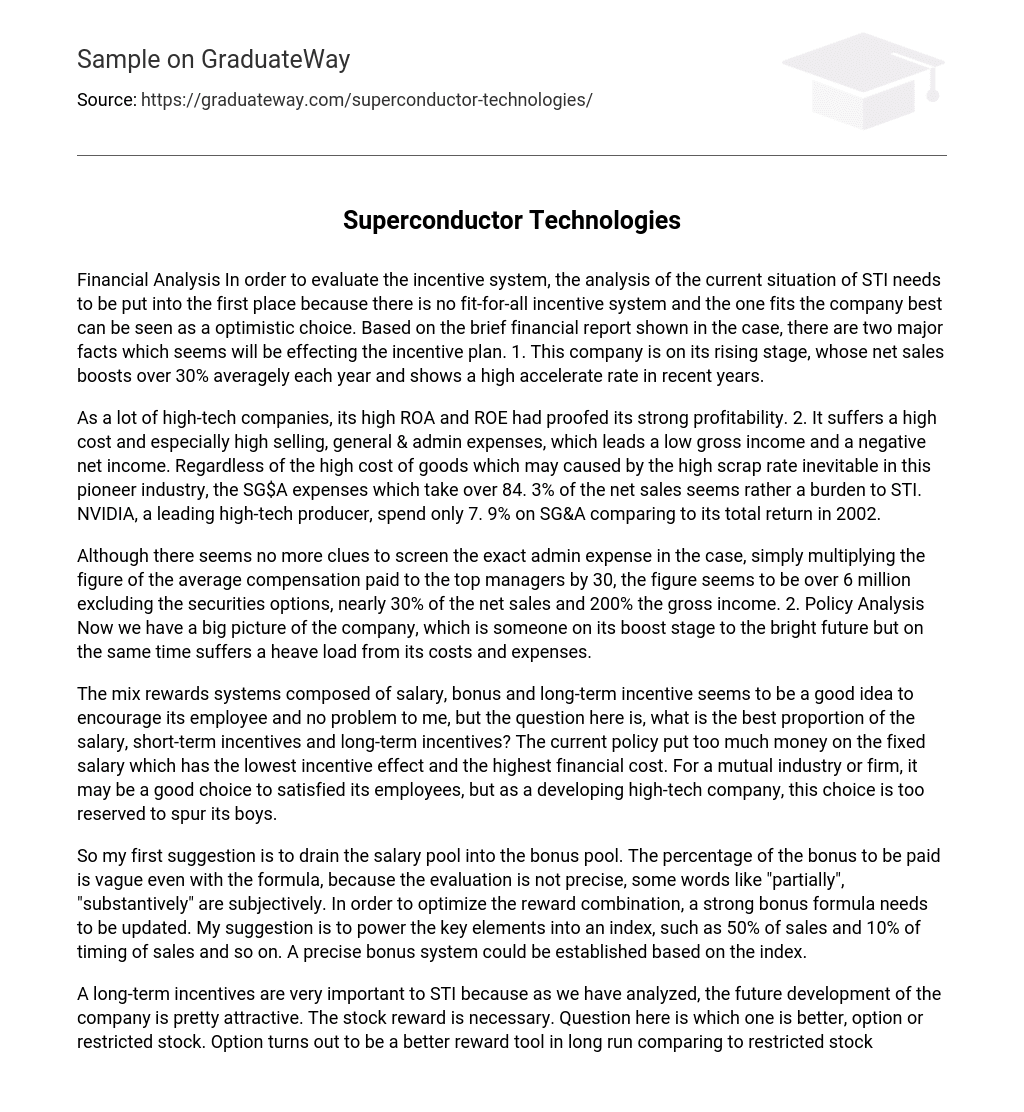Financial Analysis In order to evaluate the incentive system, the analysis of the current situation of STI needs to be put into the first place because there is no fit-for-all incentive system and the one fits the company best can be seen as a optimistic choice. Based on the brief financial report shown in the case, there are two major facts which seems will be effecting the incentive plan. 1. This company is on its rising stage, whose net sales boosts over 30% averagely each year and shows a high accelerate rate in recent years.
As a lot of high-tech companies, its high ROA and ROE had proofed its strong profitability. 2. It suffers a high cost and especially high selling, general & admin expenses, which leads a low gross income and a negative net income. Regardless of the high cost of goods which may caused by the high scrap rate inevitable in this pioneer industry, the SG$A expenses which take over 84. 3% of the net sales seems rather a burden to STI. NVIDIA, a leading high-tech producer, spend only 7. 9% on SG&A comparing to its total return in 2002.
Although there seems no more clues to screen the exact admin expense in the case, simply multiplying the figure of the average compensation paid to the top managers by 30, the figure seems to be over 6 million excluding the securities options, nearly 30% of the net sales and 200% the gross income. 2. Policy Analysis Now we have a big picture of the company, which is someone on its boost stage to the bright future but on the same time suffers a heave load from its costs and expenses.
The mix rewards systems composed of salary, bonus and long-term incentive seems to be a good idea to encourage its employee and no problem to me, but the question here is, what is the best proportion of the salary, short-term incentives and long-term incentives? The current policy put too much money on the fixed salary which has the lowest incentive effect and the highest financial cost. For a mutual industry or firm, it may be a good choice to satisfied its employees, but as a developing high-tech company, this choice is too reserved to spur its boys.
So my first suggestion is to drain the salary pool into the bonus pool. The percentage of the bonus to be paid is vague even with the formula, because the evaluation is not precise, some words like “partially”, “substantively” are subjectively. In order to optimize the reward combination, a strong bonus formula needs to be updated. My suggestion is to power the key elements into an index, such as 50% of sales and 10% of timing of sales and so on. A precise bonus system could be established based on the index.
A long-term incentives are very important to STI because as we have analyzed, the future development of the company is pretty attractive. The stock reward is necessary. Question here is which one is better, option or restricted stock. Option turns out to be a better reward tool in long run comparing to restricted stock but may bear more risks in case the falling of the stock. What is more sensitive, option may turn income statement even more “ugly” because it should be recognized as expense immediately.
So for the sake of the mutual benefits of company and employees, an combination of option and restricted stock seems to be a good idea. Furthermore, the accelerated vesting policy should be abandoned immediately because it helps nothing to inspire its top managers but will definitely distract their attentions to some extent of speculation. 3. Conclution and recommendation 1. The structure of the new incentive plan is OK, except some details needs modification. 2.
The total amount of money of this incentive plan should be constrained as least to a reasonable proportion of the total income. 3. The proportion of the cash, short-term and long-term rewards needs adjustment. STI should put more money on the bonus and at the same time, a new bonus formula should be established. 4. An combination of option and restricted stock could inspire the manager for the future development and at the same time, relief current P&L dilemma of the company. A deferred compensation plan is another good choice.





